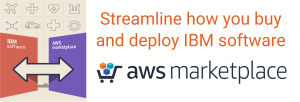Continuous Integration and Deployment for Model-Based Systems Engineering
Model-Based Systems Engineering (MBSE) Meets CI/CD
Model-Based Systems Engineering (MBSE) is essential for managing increasingly complex systems that integrate hardware, software, and compliance requirements. In many organizations, MBSE still lives in its own silo — executed manually, updated sporadically, and disconnected from day-to-day development and deployment workflows.
At the same time, software teams have embraced Continuous Integration and Continuous Deployment (CI/CD) to deliver faster, safer, and more traceable code. This post explores what happens when you bring those two worlds together — and why it matters more than ever in regulated industries.
This isn’t just about speed. When combined with DevSecOps principles and frameworks like the SEI’s DevSecOps Platform Independent Model (PIM), integrating MBSE into CI/CD workflows can fundamentally improve how systems are validated, secured, and delivered.
MBSE and CI/CD: Two Worlds, One Goal
MBSE helps teams manage architecture, requirements, traceability, and system validation through structured models instead of documents. But MBSE processes are often gated by manual reviews and long feedback loops.
CI/CD, on the other hand, is built to automate feedback. Every code change is tested, verified, and deployed automatically — giving teams immediate insight into what works and what doesn’t.
When you integrate MBSE into CI/CD workflows, you’re no longer waiting weeks to find out whether a model change caused a problem downstream. Instead, you’re creating an always-on system of continuous validation for your entire system design.
Model-Driven Engineering Meets DevOps: Why MBSE Belongs in Your CI/CD Pipeline
- Faster Feedback Loops: Every change to a system model can automatically trigger validations, checks, and simulations. Issues are surfaced in minutes — not in a late-stage design review.
- Built-in Security: With frameworks like SEI’s DevSecOps PIM, MBSE can include structured representations of threat scenarios and system attack surfaces. These models can then be validated continuously within the pipeline, just like functional or performance tests.
- Better Collaboration: When models are committed and versioned just like source code, it becomes easier for software, systems, and security teams to stay in sync. You reduce handoff friction between modeling and implementation teams.
- Stronger Traceability: CI/CD pipelines preserve version histories, validation artifacts, and test results — automatically creating the audit trails often required in safety-critical industries.
Real-World Patterns: How It Works
The SEI report “Using MBSE to Assure a DevSecOps Pipeline is Sufficiently Secure” lays out a practical roadmap for achieving this integration. It recommends treating the DevSecOps pipeline itself as a system — one that can be modeled, analyzed, and assured using MBSE techniques.
This includes using modeling tools (like Rhapsody or MagicDraw) to define requirements, system behavior, and security constraints. Then, using a CI/CD platform (like GitLab or Jenkins), teams can trigger:
- Syntax and consistency checks
- Requirement-to-test coverage reports
- Security scenario validations
- Simulation and behavioral model execution
- Generation of compliance or assurance artifacts
These steps ensure that any change — whether it’s to the model or the implementation — is tested and verified as part of a living, breathing development process.
From Concept to Execution
In a typical MBSE + CI/CD workflow, a system engineer might make a change to a SysML model in Rhapsody. Once committed to version control, this change triggers a pipeline that automatically:
- Runs model validation checks
- Executes simulation or scenario-based tests
- Regenerates documentation and requirements coverage reports
- Flags inconsistencies or violations tied to security constraints modeled using the DevSecOps PIM
- Notifies the team with results and evidence artifacts
The result is a system where design, validation, and compliance are continuously enforced — not manually policed.
Practical Applications
This type of MBSE-driven pipeline is especially valuable in complex, regulated industries:
- Aerospace and Defense: Support early threat modeling, continuous verification, and evidence generation required by mission assurance frameworks.
- Medical Devices: Automatically generate traceability matrices and compliance reports aligned with FDA expectations.
- Automotive: Align safety requirements, architectural models, and software implementation under ISO 26262 workflows.
- Government Programs: Use structured MBSE views to drive DevSecOps assurance claims and validate secure configurations continuously.
Conclusion: CI/CD Makes MBSE Agile — and Auditable
MBSE offers a powerful way to manage system complexity, but its full potential is only realized when connected to the tools and workflows that power modern engineering.
By integrating MBSE into a CI/CD pipeline, teams gain speed, visibility, and assurance — not just in how they build systems, but in how they validate them, secure them, and prove their correctness.
As the SEI notes, modern pipelines are no longer just automation frameworks. They are systems themselves — and systems deserve models.
When you model the pipeline and connect your MBSE artifacts to automated checks, you don’t just build faster. You build better.
For Additional Information
Want to Make It Real?
At 321 Gang, we help engineering teams implement model-based CI/CD pipelines that support traceability, compliance, and DevSecOps objectives — using tools like IBM Rhapsody, GitLab, and IBM ELM.
If you’re working on complex systems and want to:
- Automate model validation
- Improve visibility into your system design lifecycle
- Align security and systems engineering practices
If you are interested in learning more contact 321 Gang.

321 Gang | 14362 North FLW | Suite 1000 | Scottsdale, AZ 85260 | 877.820.0888 info@321gang.com


